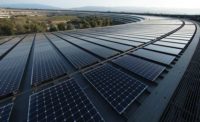In today’s energy market, consumers are becoming producers, and technology is placing more control in the hands of the many. On their own, familiar technologies—behind-the-meter energy storage, solar arrays, smart thermostats and electric vehicles (EV)—provide valuable but small-scale energy and sustainability benefits. When aggregated to become virtual power plants (VPPs), however, they become game-changers in grid management.
In energy today, the watchword is "distributed." Our massive, centralized electric power systems are being transformed as distributed energy resources (DER) plug into the mainstream market. As we integrate renewables, VPPs emerge as a responsive energy model that uses smart software and the so-called Internet of Things to aggregate thousands of smaller, separate power-producing sources scattered across the grid. These VPP networks, formed and managed by a growing number of companies across the globe, help utilities to match grid supply and demand by providing backup power during outages and peak-shaving.
California, a clean-energy leader in the U.S., is piloting energy aggregation for grid needs on a grand scale. The state’s three major utilities are contracting with VPPs to provide 82 MW of energy from residential and commercial sources this year. As an interesting energy diversification twist, nearly 5 MW will come from EV technologies—a relative newcomer to the VPP inner circle that holds immense energy promise.
As a grid asset, the EV fleet’s ever-increasing battery capacity tops the interest charts in the energy world. EV battery innovation is running at a price/performance clip of 7% to 8% year over year, and, as traction packs, their design enables them to withstand the most demanding applications. Further, their capacity and flexibility—a secondary benefit of purchasing a vehicle that happens to be electric—are largely untapped. Without a doubt, these gems on the grid are rather valuable.
On-the-road EVs will hit the 2-million mark by the end of 2016 and 11 million by 2025, some estimate. The takeaway is that when 2 million EVs (and growing) connect to a charge station, VPPs can substantially alter demands on the grid by slowing or ceasing EV charging (with permission from the vehicle owner). Likewise, with bidirectional flow capabilities, EVs will enable VPPs to deploy smart discharging, moving stored energy from the EV battery to reduce load on the grid within seconds.
Robust batteries and smart technologies that support EV aggregation are reaching their prime. However, as with most nascent technology applications, there are challenges that the industry needs to overcome to maximize EV’s grid value.
First, policies must provide a framework for market access and aggregation. Regulations must be written to enable benefits, such as creating policies that simplify participation in energy-service programs by behind-the-meter resources.
Second, the cost of participating in VPPs needs to be economical. While the aggregate resource can be huge, individual vehicles contribute a small slice to the grid pie. Through the boundless processing power of "the cloud" and low-cost communication technologies, the industry can dispatch EVs at increasingly lower price points as volume reaches new heights.
Third, stakeholders must structure VPP programs for maximum value. A fair exchange of value among those procuring these flexible resources—EV drivers, fleet operators, site hosts, VPP operators and grid operators—is essential to drive these initiatives forward. As policy expands market opportunities and the cost to participate falls, multiple compelling market choices for EV enrollment in VPPs will emerge. Further, compensation for EVs that participate in VPPs will accelerate EV adoption and help to deliver on the promise of clean energy.
The momentum behind aggregated energy is strong. Black & Veatch’s 2016 "Strategic Directions: Electric Industry Report" found that more than 75% of respondents were “interested” or "very interested" in EVs as new load and revenue streams. Likewise, 63% wanted to understand how EVs benefit grid services. In the same report, 62% say they are studying the regulatory environment surrounding EV infrastructure—an indication that they want to support consumer interest in EVs, accelerate EV adoption and gain related sustainability benefits.
To capture value from DERs, utility and commercial clients can benefit from integrated resource planning to define their business objectives and determine how DERs and VPPs can best help them to meet their goals. Engineering companies with cross-domain expertise can help clients to develop this comprehensive plan and design a program to leverage VPP supply. Meanwhile, aggregators prepare for VPP provision by enrolling a fleet of consumer and commercial vehicles. As electric fleets grow, engineering companies will be engaged to deploy charging infrastructure and communications technology to connect and control vehicle chargers.
With new momentum, the EV numbers game will quickly transform. Soon enough, EVs will pay for their own charging infrastructure through reduced transportation operating costs and grid revenues. Extensive infrastructure will escalate EV adoption, which, in turn, will amplify aggregation resources as well as our opportunity to achieve true energy sustainability.
Paul Stith is solution lead for smart transportation in Black & Veatch’s Smart Integrated Infrastructure business. He builds solution sets and expands the business ecosystem with established and emerging technology partners. Stith lives in California and has been driving electric since 2011.




Post a comment to this article
Report Abusive Comment